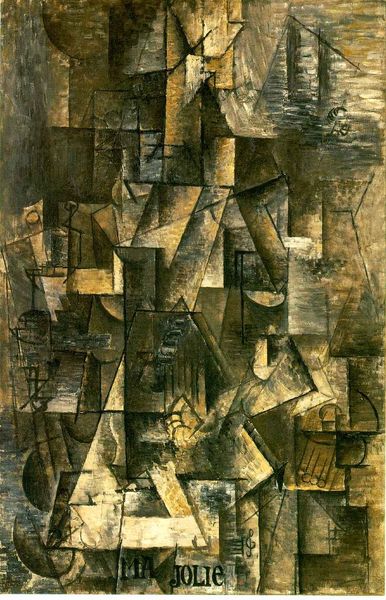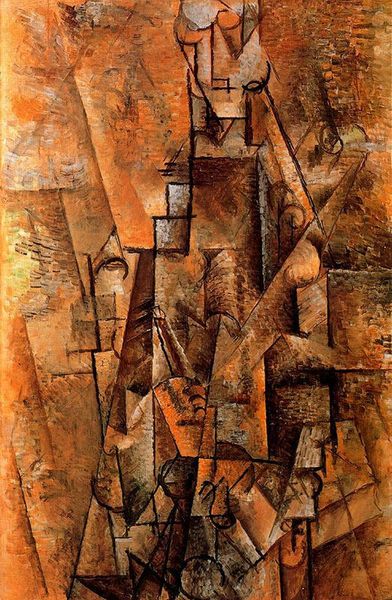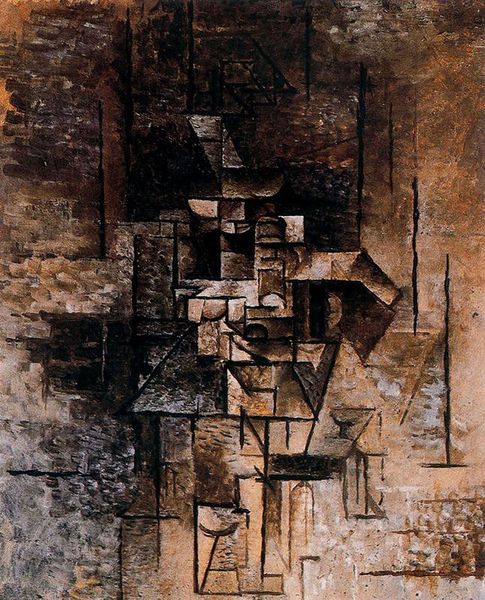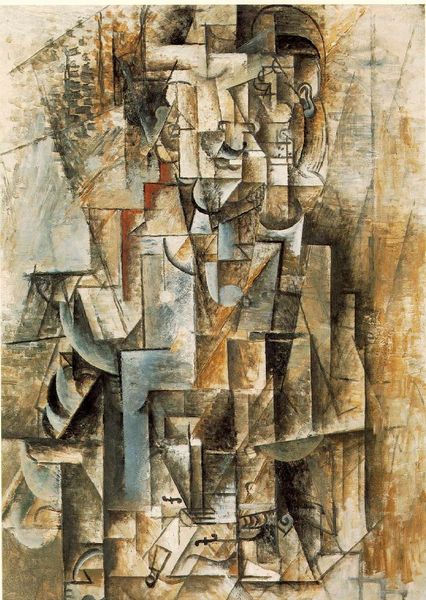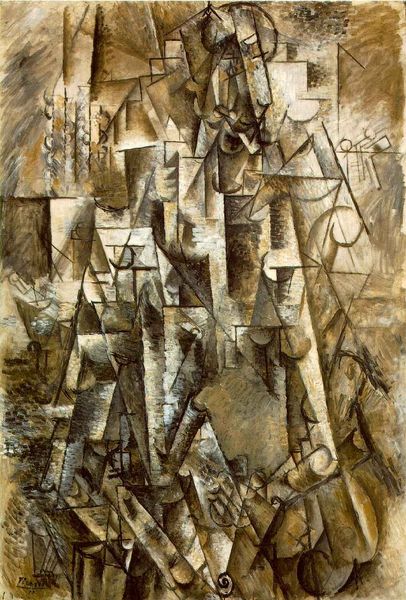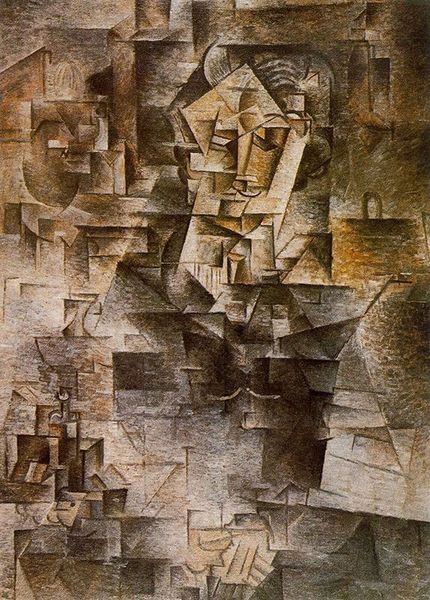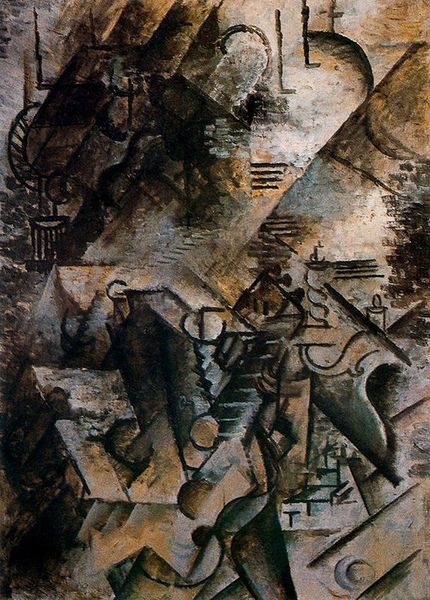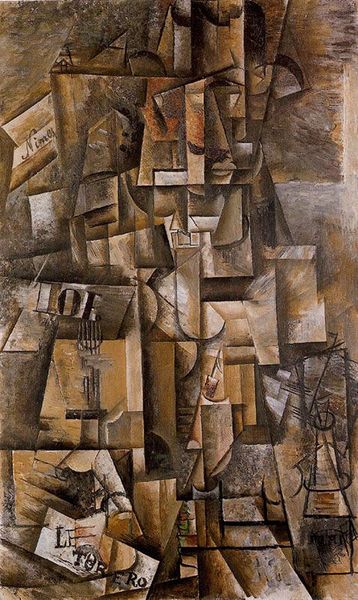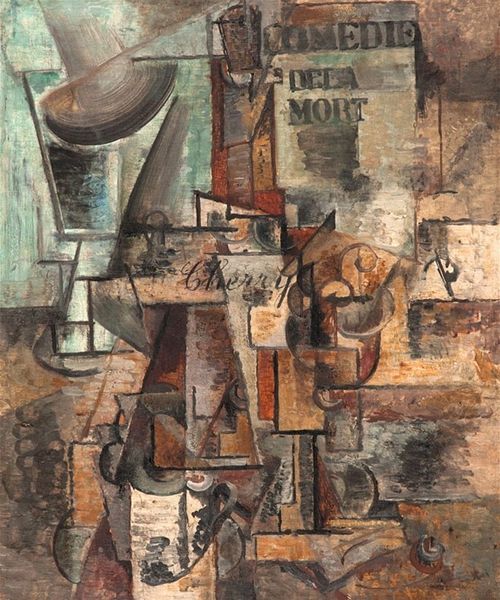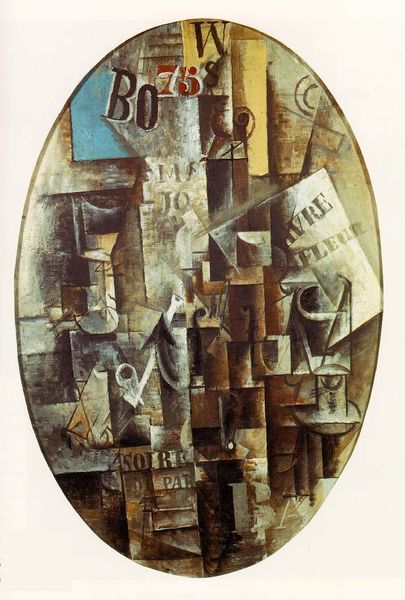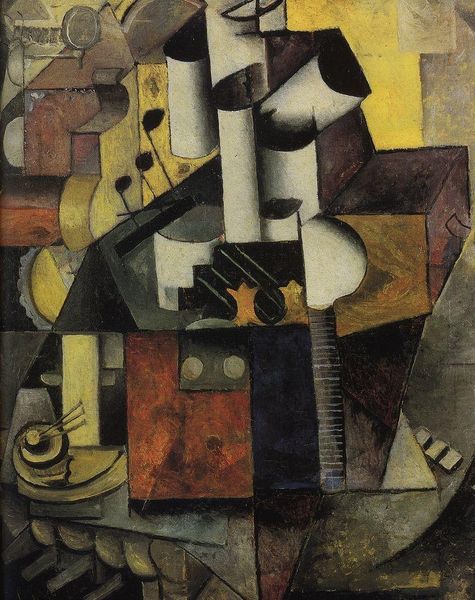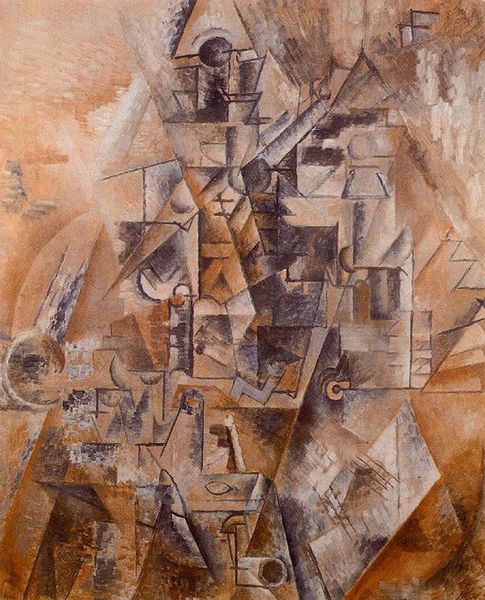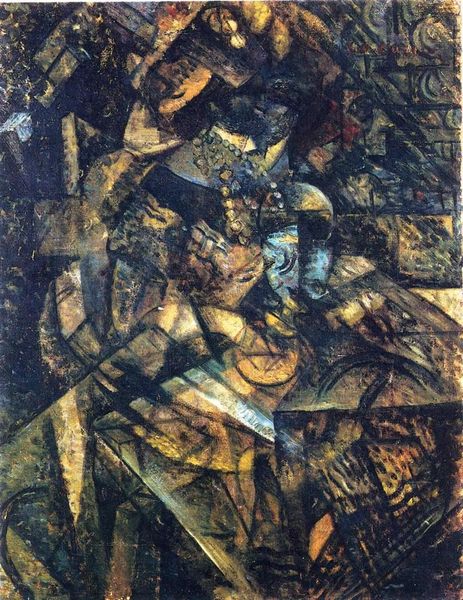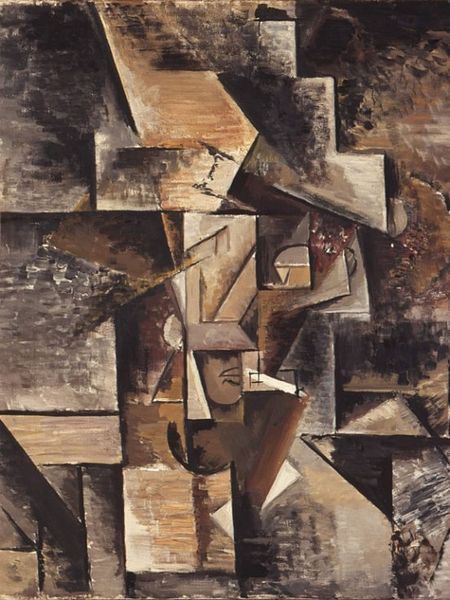
painting, oil-paint
#
portrait
#
cubism
#
painting
#
oil-paint
#
oil painting
#
abstraction
Copyright: Public domain US
Editor: Here we have Picasso's "The Mandolinist," an oil painting created in 1911. It's a fascinating, almost overwhelming, composition of fractured forms. What initially strikes me is how it challenges my perception – it's difficult to immediately discern the figure of the musician. How do you interpret this work? Curator: Picasso's Cubism here is not just about breaking down forms visually. It’s also a radical statement about representation itself. Consider the social context: early 20th century, burgeoning modernity, new ways of seeing thanks to photography and film. Why mimic reality when it can be captured mechanically? Editor: So, cubism was almost a response to the changing times? Curator: Precisely. It becomes about depicting not just one view of an object, but multiple viewpoints simultaneously. Look closely at the layering and faceting of the shapes. It mirrors how our memories and perceptions are constructed, fragmented, and reassembled. And the monochrome palette focuses attention on the intellectual and formal problem Picasso is setting himself. Do you think a brighter, more vibrant painting could achieve the same impact? Editor: I see your point. The subdued colors really do emphasize the structure. The shapes become the main focus, rather than any emotional impact color might bring. I do wonder, though, if it might alienate some viewers? Curator: That’s an excellent point! Cubism was initially quite controversial, challenging the established academic style. Its esoteric nature sparked debate about the very definition of art and who it was for. That questioning is part of its enduring legacy. Editor: I hadn't thought about its impact in terms of sparking a broader dialogue about art itself. Curator: Exactly. It compels us to reconsider the role of art institutions and the public’s engagement with modern ideas. It's a powerful reflection of its time and continues to influence contemporary artistic practices. Editor: That gives me a whole new appreciation for the piece. It’s much more than just an abstract image; it’s a reflection of a society grappling with change.
Comments
No comments
Be the first to comment and join the conversation on the ultimate creative platform.
